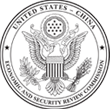November 2019 Trade Bulletin987.23 KB
Highlights of This Month’s Edition
- Bilateral trade: U.S. goods deficit with China reached $96 billion in Q3 2019, down 16.9 percent year-on-year; U.S. agricultural exports surge as China ups purchases; for the first time in the last 15 years, U.S. services exports to China have contracted for three consecutive quarters.
- Bilateral policy issues: On October 11, President Donald Trump announced a preliminary Phase One U.S.-China trade deal, with further details and signing still pending; the U.S. Department of Commerce added eight Chinese technology firms to its Entity List due to the firms’ role in surveillance of ethnic minorities in Xinjiang; pressure on U.S.-based multinationals to censor speech related to Hong Kong protests draws attention from U.S. lawmakers.
- Quarterly review of China’s economy: China’s government reports GDP grew 6.0 percent in Q3 2019—the slowest growth rate ever recorded—amid trade tensions, weak domestic demand, and sluggish investment; softening demand has created downward pressure on prices, further threatening growth and financial stability.
- Policy trends in China’s economy: At Fourth Plenum, the CCP tabled discussion of the economy and maintained focus on Party leadership over all aspects of society; draft implementation regulations for China’s Foreign Investment Law leaves key terms and oversight responsibilities undefined; the World Bank’s annual Doing Business 2020 report finds improvements in China’s business environment based on surveys in two cities; General Secretary Xi endorses blockchain in his first in-depth remarks on the technology; China enacts new Cryptography Law, laying the framework for a state-backed national digital currency.
